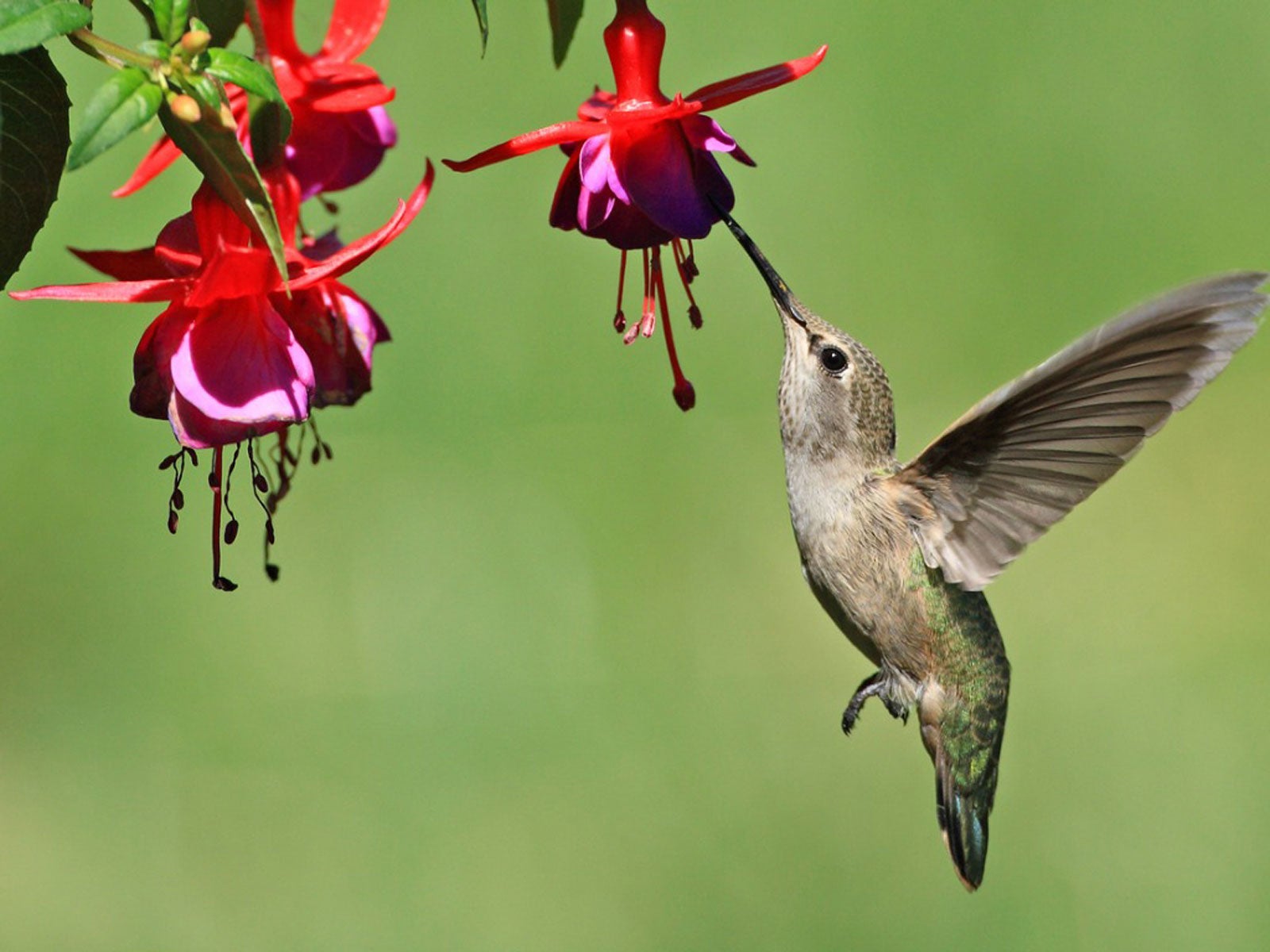
What shade plants attract hummingbirds? What should you include in a hummingbird shade garden? Begin by planting a variety of nectar-rich flowers that bloom at different times. Select native plants whenever possible.
Read on and learn about a few easy-to-grow shade flowers for hummingbirds.
Choosing Shade Plants Hummingbirds Like
Hummingbirds need flowers with tubular blooms which hold nectar and accommodate their long beaks. They are drawn to red, yellow, pink, and orange flowers, either solid colors or blends and variegations.
- Fuchsia plants – Fuchsia, with dangling, tubular flowers from midsummer to fall, is ideal for a hummingbird shade garden. There are more than 100 species of fuchsia, both annual and perennial, in shades of reds, pinks, blues, and other colors that hummingbirds love. Fuchsia plants benefit from a little morning sunlight, but they won’t live long in direct afternoon sunlight or extreme heat. Hardiness varies; some are suitable only for zones 10 and 11, while others are hardy to zone 6.
- Columbine flowers – These begin flowering in early spring, about the time migrating hummingbirds are returning from their winter homes. These nectar-rich woodland plants are available in a variety of colors, including hummingbird favorites such as red, pink, and salmon. Columbine thrives in full to part shade in zones 3 through 8.
- Bleeding heart (Dicentra spectabilis) – This is a lovely woodland plant that displays pink or white, heart-shaped flowers that dangle gracefully from arching stems. Bleeding heart works well in a hummingbird shade garden and will go dormant during the summer. Bleeding heart is a hardy perennial, suitable for zones 3 through 9.
- Foxglove (Digitalis) – Foxglove is suitable for growing in partial shade and will tolerate more sunlight in cool climates. It isn’t a good choice for deep shade. Hummingbirds are drawn to the tall spikes of tubular flowers in shades of purple, pink, white, and yellow. Hardiness varies depending on the species, but most are suitable for zones 3 through 9.
- Toad lily – Toad lilies are among the best hummingbird plants for shade because the flowers, which continue to bloom late in the season, provide an energy boost for hummers preparing to fly south for the winter. The petite, orchid-like blooms are white to pale lavender with purple blotches. This perennial is good for full or partial shade in zones 4 through 8.
- Cardinal flower – Lobelia cardinalis, also known as red cardinal flower, is a tall perennial with spikes of intensely red flowers. The nectar-rich blooms provide sustenance to hummingbirds late in the season when most flowers have peaked. In turn, lobelia cardinalis depend on hummingbirds for pollination because many insects have a difficult time reaching into the long, tube-shaped flowers. Suitable in zones 3 through 9.
What shade plants attract hummingbirds? What should you include in a hummingbird shade garden? Begin by planting a variety of nectar-rich flowers that bloom at different times. Select native plants whenever possible.
Read on and learn about a few easy-to-grow shade flowers for hummingbirds.
Choosing Shade Plants Hummingbirds Like
Hummingbirds need flowers with tubular blooms which hold nectar and accommodate their long beaks. They are drawn to red, yellow, pink, and orange flowers, either solid colors or blends and variegations.
- Fuchsia plants – Fuchsia, with dangling, tubular flowers from midsummer to fall, is ideal for a hummingbird shade garden. There are more than 100 species of fuchsia, both annual and perennial, in shades of reds, pinks, blues, and other colors that hummingbirds love. Fuchsia plants benefit from a little morning sunlight, but they won’t live long in direct afternoon sunlight or extreme heat. Hardiness varies; some are suitable only for zones 10 and 11, while others are hardy to zone 6.
- Columbine flowers – These begin flowering in early spring, about the time migrating hummingbirds are returning from their winter homes. These nectar-rich woodland plants are available in a variety of colors, including hummingbird favorites such as red, pink, and salmon. Columbine thrives in full to part shade in zones 3 through 8.
- Bleeding heart (Dicentra spectabilis) – This is a lovely woodland plant that displays pink or white, heart-shaped flowers that dangle gracefully from arching stems. Bleeding heart works well in a hummingbird shade garden and will go dormant during the summer. Bleeding heart is a hardy perennial, suitable for zones 3 through 9.
- Foxglove (Digitalis) – Foxglove is suitable for growing in partial shade and will tolerate more sunlight in cool climates. It isn’t a good choice for deep shade. Hummingbirds are drawn to the tall spikes of tubular flowers in shades of purple, pink, white, and yellow. Hardiness varies depending on the species, but most are suitable for zones 3 through 9.
- Toad lily – Toad lilies are among the best hummingbird plants for shade because the flowers, which continue to bloom late in the season, provide an energy boost for hummers preparing to fly south for the winter. The petite, orchid-like blooms are white to pale lavender with purple blotches. This perennial is good for full or partial shade in zones 4 through 8.
- Cardinal flower – Lobelia cardinalis, also known as red cardinal flower, is a tall perennial with spikes of intensely red flowers. The nectar-rich blooms provide sustenance to hummingbirds late in the season when most flowers have peaked. In turn, lobelia cardinalis depend on hummingbirds for pollination because many insects have a difficult time reaching into the long, tube-shaped flowers. Suitable in zones 3 through 9.
